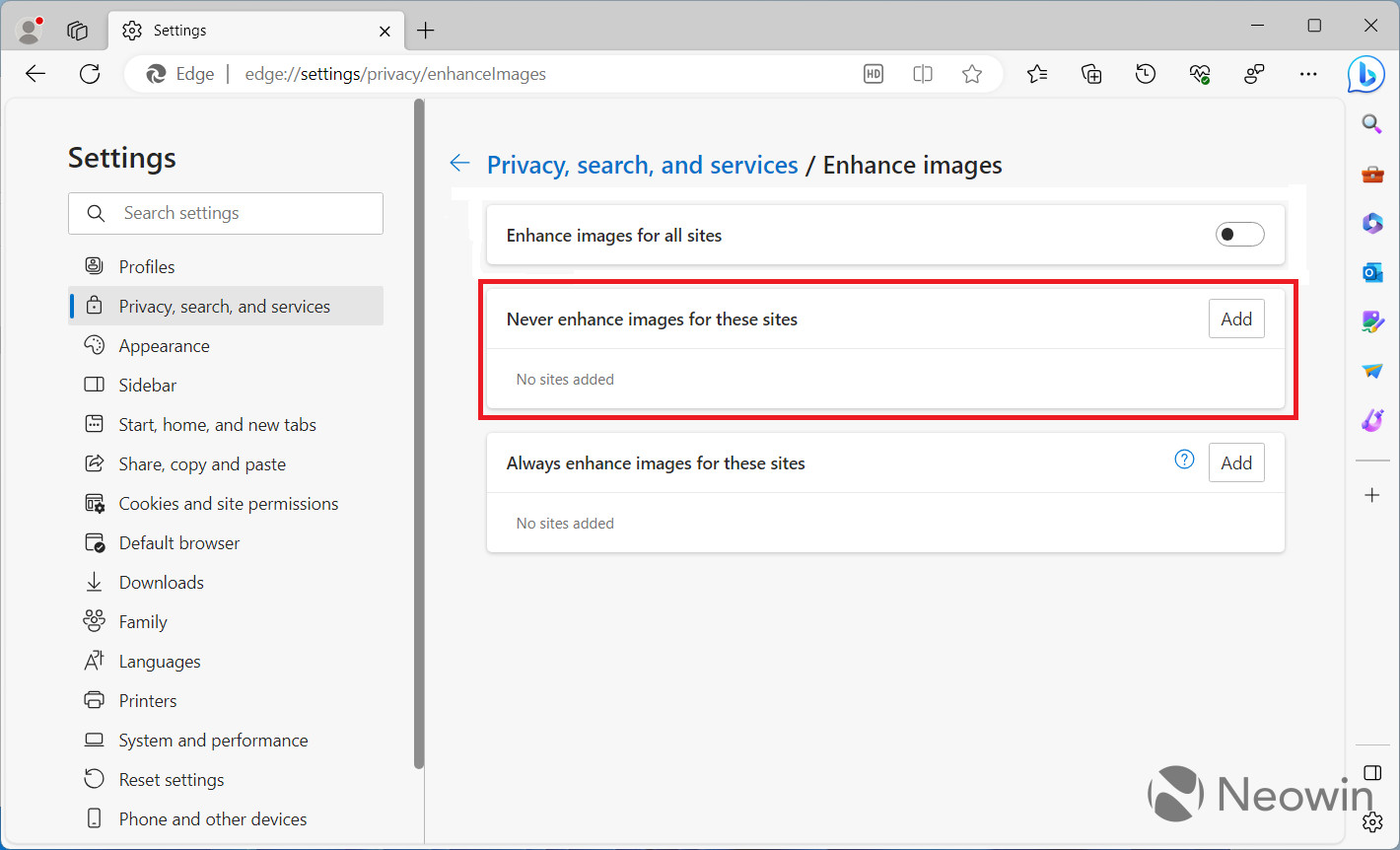Xploit Machine
Well-known member
- Joined
- Nov 29, 2022
- Messages
- 1,281
- Reaction score
- 109
Microsoft Edge is a feature-packed browser with many tools and options to make your browsing experience better and more convenient. However, some of those features raise privacy concerns. Not so long ago, Microsoft Edge ended up in hot waters after users discovered a bug leaking your browser history to Bing. Now you may want to toggle off another feature to ensure Edge is not sending every picture you view online to Microsoft.
Edge has a built-in image enhancement tool that, according to Microsoft, can use "super-resolution to improve clarity, sharpness, lighting, and contrast in images on the web." Although the feature sounds exciting, recent Microsoft Edge Canary updates have provided more information on how image enhancement works. The browser now warns that it sends image links to Microsoft instead of performing on-device enhancements.
Edge has a built-in image enhancement tool that, according to Microsoft, can use "super-resolution to improve clarity, sharpness, lighting, and contrast in images on the web." Although the feature sounds exciting, recent Microsoft Edge Canary updates have provided more information on how image enhancement works. The browser now warns that it sends image links to Microsoft instead of performing on-device enhancements.
The biggest problem with Edge's "super-resolution" and other questionable services is that it is enabled by default. Therefore, unaware users automatically give the browser permission to send pictures to Microsoft for processing and enhancement. Here is how to fix that:
- Launch Microsoft Edge and open its main menu.
- Go to Settings > Privacy, Search, and Services.
Microsoft is working on making the feature more flexible. Upcoming Edge updates will allow you to pick a more balanced way and specify what websites Edge should not process. If you use Microsoft Edge Canary, head to Settings > Privacy, Search, and Services > Enhance images in Microsoft Edge and Add next to the Never Enhance images for these sites list.

Microsoft Edge has another AI-based feature called Video Super Resolution. It makes low-res videos sharper and less pixelated. However, it uses on-device processing powered by discrete graphics cards instead of sending the content to Microsoft.

Microsoft Edge has another AI-based feature called Video Super Resolution. It makes low-res videos sharper and less pixelated. However, it uses on-device processing powered by discrete graphics cards instead of sending the content to Microsoft.


